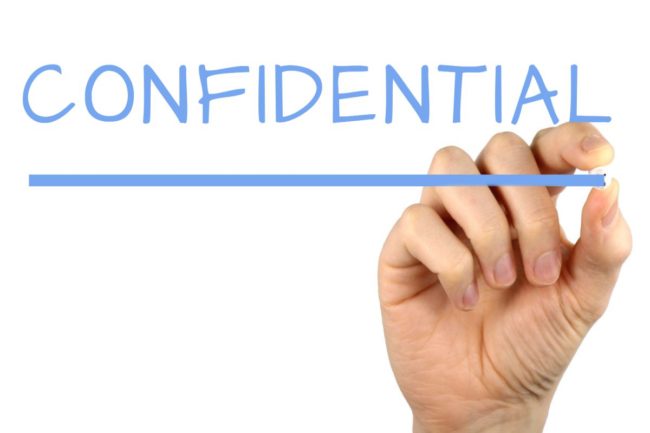
By Andrew A. Servais
As most know, on November 1, 2018, 69 new California Rules of Professional Conduct replaced 46 current Rules of Professional Conduct in an effort to bring the California Rules in closer alignment with ABA Model Rules.
But it remains the duty of every California attorney “[t]o maintain inviolate the confidence, and at every peril to himself or herself to preserve the secrets, of his or her client.” (Bus. & Prof. Code § 6068(e)(1).) “The ethical duty of confidentiality is much broader in scope and covers communications that would not be protected under the evidentiary attorney-client privilege.” (In the Matter of Johnson (Rev. Dept. 2000) 4 Cal. State Bar Ct. Rptr. 179, 189.)
This duty of confidentiality is implemented in several of California’s New Rules of Professional Conduct presenting a significant difference from their ABA counterpart. (See, e.g., Cal. Rule Prof. Conduct, Rule 1.6 [“(a) A lawyer shall not reveal information protected from disclosure by Business and Professions Code section 6068, subdivision (e)(1) unless the client gives informed consent, or the disclosure is permitted by paragraph (b) of this rule.”])
For instance, ABA Model Rule 3.3 provides that “(b) A lawyer who represents a client in an adjudicative proceeding and who knows that a person intends to engage, is engaging or has engaged in criminal or fraudulent conduct related to the proceeding shall take reasonable remedial measures, including, if necessary, disclosure to the tribunal.” [emphasis added].
In contrast, California Rule 3.3 provides “(b) A lawyer who represents a client in a proceeding before a tribunal and who knows that a person intends to engage, is engaging or has engaged in criminal or fraudulent conduct related to the proceeding shall take reasonable remedial measures to the extent permitted by Business and Professions code section 6068, subdivision (e) and rule 1.6.” [emphasis added.] Comment 5 provides, in part, that the remedial measures “refer to measures that are available under these rules and the State Bar Act, and which a reasonable lawyer would consider appropriate under the circumstances to comply with the lawyer’s duty of candor to the tribunal” and “include explaining to the client the lawyer’s obligations under this rule and, where applicable, the reasons for the lawyer’s decision to seek permission from the tribunal to withdraw, and remonstrating further with the client to take corrective action that would eliminate the need for the lawyer to withdraw.”
But, “[r]emedial measures do not include disclosure of client confidential information, which the lawyer is required to protect under Business and Professions Code section 6068, subdivision (e) and rule 1.6.” (Cal. Prof. Rule of Conduct, Rule 3.3, Cmt 5.)
Thus, if an attorney comes to know of a client’s presentation of false evidence, a California attorney would potentially be precluded from disclosing this information if it fell under the broad umbrella of section 6068(e)(1). In all other States, on the other hand, Rule 3.3 would generally require disclosure to the Court. (See, e.g., SPV-LS, LLC v. Transamerica Life Insurance Company (D.S.D., Aug. 23, 2017, No. CV 14-4092) aff’d in part, rev’d in part and remanded (8th Cir. 2019) 912 F.3d 1106 [“If the document was forged and even if at the time of production Attorney Kroll did not know it was forged, if he later came to know of its falsity, then a reasonable remedial measure under Rule 3.3 of the Rules of Professional Conduct would be to promptly make a disclosure of the falsity to this Court.”]; In re Hill (Bankr. W.D. Pa. 2010) 437 B.R. 503, 545 [“counsel, with knowledge of the misleading Townsend testimony, had a duty to take some remedial action respecting it, even though that could potentially require divulging attorney-client privileged material.”]; Montgomery v. Etreppid Techs., LLC (D.Nev.2009) 2009 WL 435195 at *2 [Rule 3.3 “obligates a lawyer to take steps necessary to prevent admission of false testimony or evidence by either counseling the client, withdrawing from the representation, and/or bringing the false evidence to the Court’s attention.”])
It is thus imperative that California attorneys recognize this distinction if presented with the dilemma of addressing a client engaging in criminal or fraudulent conduct before a tribunal.
Andrew A. Servais is a partner with Wingert, Grebing, Brubaker & Juskie, LLP.
**No portion of this summary is intended to constitute legal advice. Be sure to perform independent research and analysis. Any views expressed are those of the author only and not of the SDCBA or its Legal Ethics Committee.**
This article was originally published in the SDCBA’s “Ethics in Brief” column series.